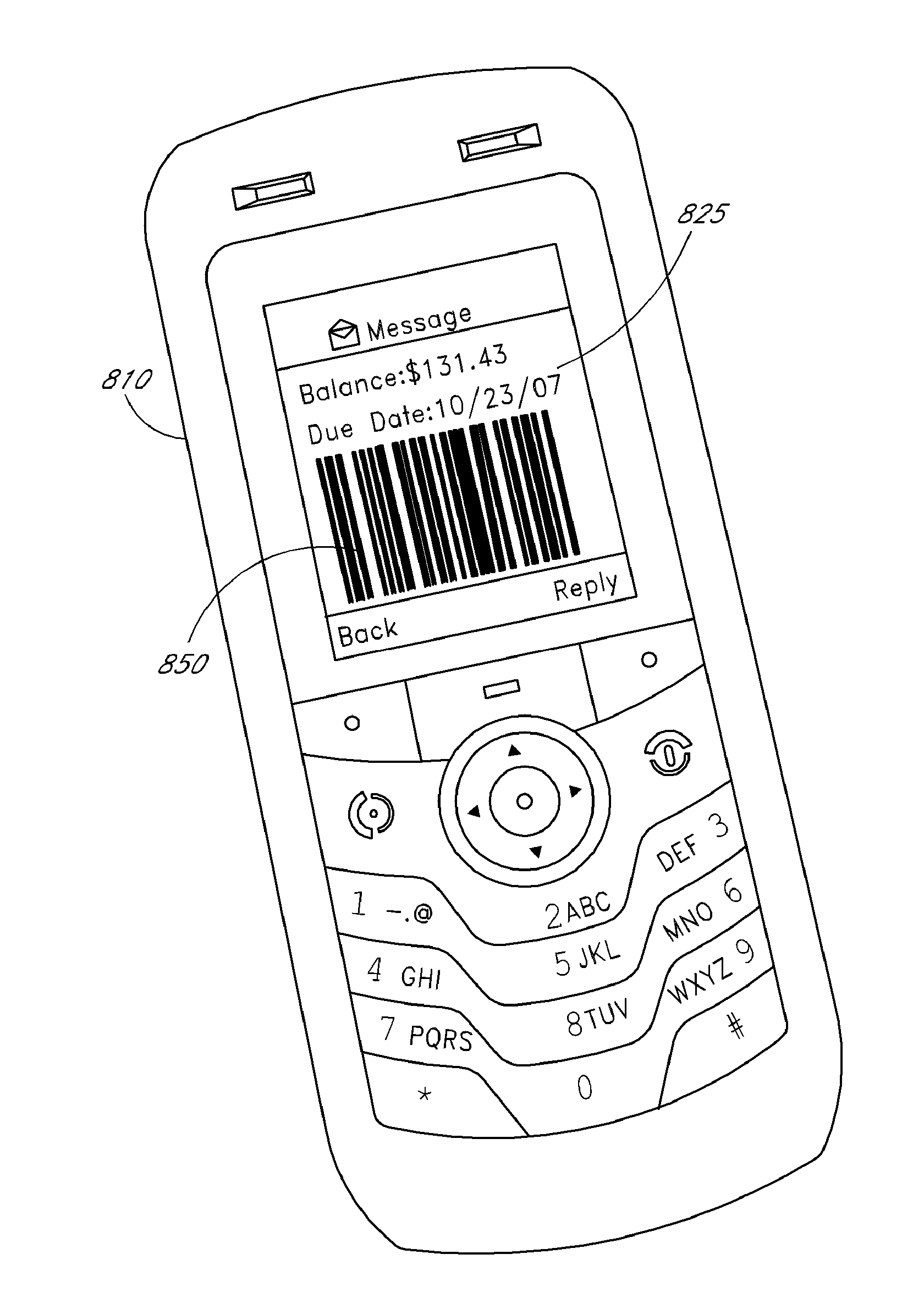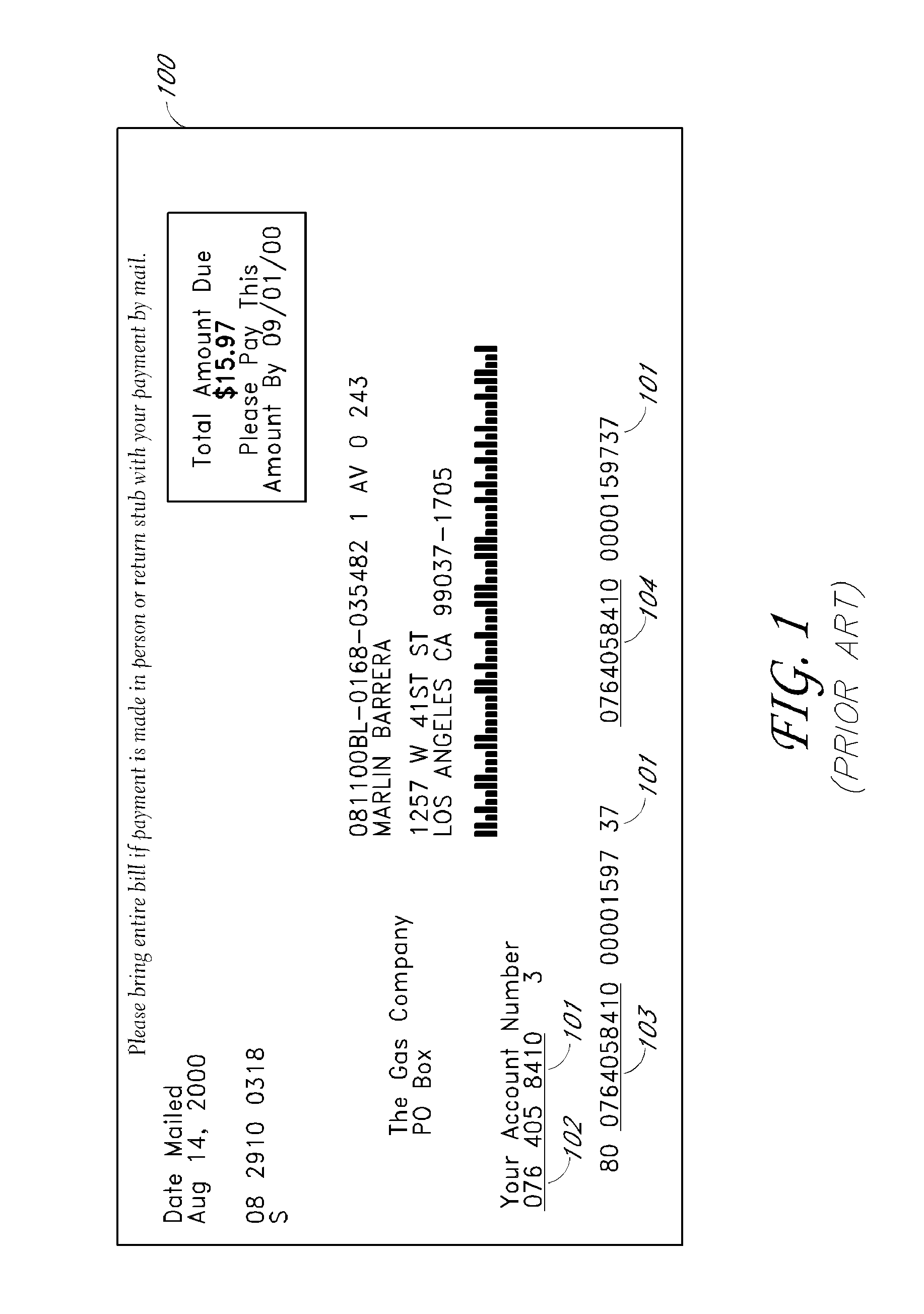Bar coded monetary transaction system and method
a bar code and monetary transaction technology, applied in the field of system and method for performing electronic monetary transactions, can solve the problems of not always covering the amount of payments made with a check, and the general limitation of credit for goods and services on the wealthy
- Summary
- Abstract
- Description
- Claims
- Application Information
AI Technical Summary
Benefits of technology
Problems solved by technology
Method used
Image
Examples
Embodiment Construction
[0070]Turning now to FIG. 5, a bar coded bill payment based system 500 consistent with the present disclosure utilizes: a) a bar code on the biller invoice, which is then delivered to the customer via mail; and b) payment information and payment credits that are returned to the biller electronically. Advantageously, nationally recognized and federally sanctioned payment electronic networks may be utilized for remitting customer payment data and funds. For all the goods and services rendered to a customer over a given billing period, the biller's accounts receivable 501 accumulates a dollar total, and generates a detailed machine printed invoice including a special bar code, which is mailed to the customer 503 via U.S. Mail 502. Time for processing and mailing may be 4-5 days after account cut-off time, and the mail transit time to the customer may add an additional 2-3 business days or more before the customer receives the invoice (which time is variable, without ...
PUM
 Login to View More
Login to View More Abstract
Description
Claims
Application Information
 Login to View More
Login to View More - R&D
- Intellectual Property
- Life Sciences
- Materials
- Tech Scout
- Unparalleled Data Quality
- Higher Quality Content
- 60% Fewer Hallucinations
Browse by: Latest US Patents, China's latest patents, Technical Efficacy Thesaurus, Application Domain, Technology Topic, Popular Technical Reports.
© 2025 PatSnap. All rights reserved.Legal|Privacy policy|Modern Slavery Act Transparency Statement|Sitemap|About US| Contact US: help@patsnap.com



